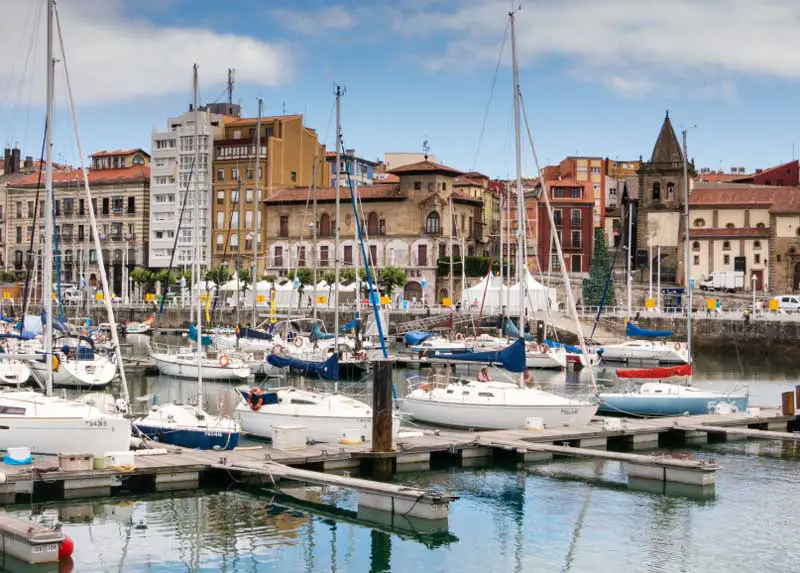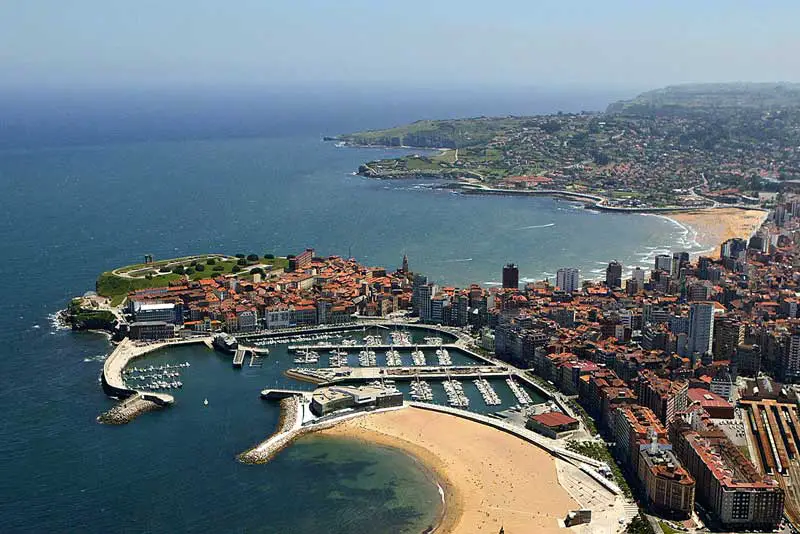Santander, Spain
Santander is the capital city of the Cantabria region on Spain’s
north coast. The Palacio de la Magdalena, once the royal summer
residence, lies at the mouth of the Bay of Santander on the rocky La
Magdalena Peninsula. West, the city center is home to the Catedral de
Santander, with its octagonal cupola and Gothic cloister. Nearby, the
Paseo de Pereda promenade runs along one side of the Jardines de Pereda
gardens.
In the early 20th century Santander became the favoured summer
residence of King Alfonso XIII, who built the Palacio de la Magdalena
as the residence of the royal family during the holidays. The city
gained great popularity from this and from the 19th century enthusiasm
for sea bathing, and it remains popular with the Spanish for beach
holidays today. During this period, Santander was (like the rest of the
northern cities) a very important economic centre. It had one of the
biggest harbours and was connected by rail to the rest of Spain.
Santander was the home town of golfer Seve Ballesteros
(1957–2011).
Santander is located east of Gijon and west of Bilbao, both of which are ports for visiting cruise ships.
The Portsmouth to Santander ferry route connects England with Spain.
Currently there is just the 1 ferry company operating this ferry
service, Brittany Ferries. The crossing operates up to 3 times each
week with sailing durations from around 23 hours 30 minutes. Sailing
durations and frequency of sailings from Portsmouth, on Britain’s South
Coast, may vary from season to season so we’d advise doing a live check
to get the most up to date information. Brittany Ferries also operates
a ferry service to Santander from Plymouth on Britain’s South Coast.
The crossing operates once a week with sailing durations from around 19
hours 30 minutes.
Plan and Book:



Santander, Spain: See and Do
Santander, is located on the northern coast of Spain and enjoys a
stunning location nestled on a small peninsular jutting between the
busy waters of the Bay of Santander and the glittering seas of the Bay
of Biscay. The area surrounding the city is lined with 11 sandy
beaches, which are perfect for sun worshipers and water sports
enthusiasts alike. The area of El Sardinero in times past was famed as
a resort by Spain’s richest citizens. Their patronage has resulted in a
beautiful area of beaches, divided by the gardens of Piquio, stretching
from the Magdalena Peninsula to Matalenas. The area also boasts hotels,
cafes and even a casino.
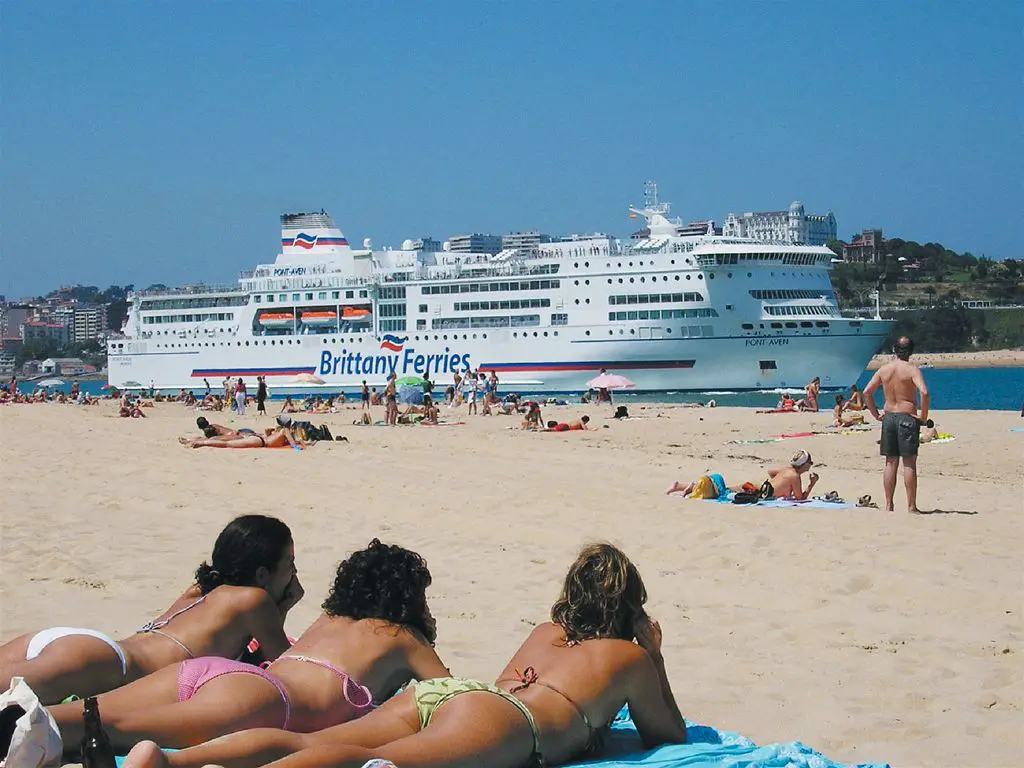
Those looking to discover Santander away from the beaches will find a
city as historic as it is beautiful. The Cathedral of Santander was
built between 13th and 14th centuries on top of proceeding holy
buildings and combines Gothic and Romanesque architecture.
Burgos Street is one of the oldest streets of the city. It may be
considered part of the old part of town, although the first references
to the street date from the mid-18th century. The title of Burgos
Street was awarded in 1845. The pedestrian-only street has benefited
the trade of the area and its residents. This street is the
headquarters of the ONCE and the Plaza de Juan Carlos I. San Fernando
Street is the main gateway to the city centre. The Plaza de las
Cervezas is a pedestrian-only area which belongs to this street, named
for the brewery (La Cruz Blanca) which stood there. Reina Victoria
Avenue overlooks the bay. Through this street is access to the beach
Los Peligros.
The Lighthouse of Cabo Mayor presides over the entrance to the Bay of
Santander. This privileged balcony overlooks the Cantabrian sea and in
the city is now one of the most emblematic and evocative for citizens
and visitors of Santander. Located in the extreme northeast of the
city, the area where the Lighthouse of Cabo Mayor is located is part of
a larger area consisting of the headlands of Cabo Mayor and Cabo Menor.
Historically located on the outskirts of the city, the area of Cabo
Mayor and Cabo Menor has applications and relevant functions: signal
maritime defensive position, horse racing, camping, public park, golf
course, etc. Thus it became a tourist landmark and one of the areas of
greatest landscape and environmental variety.
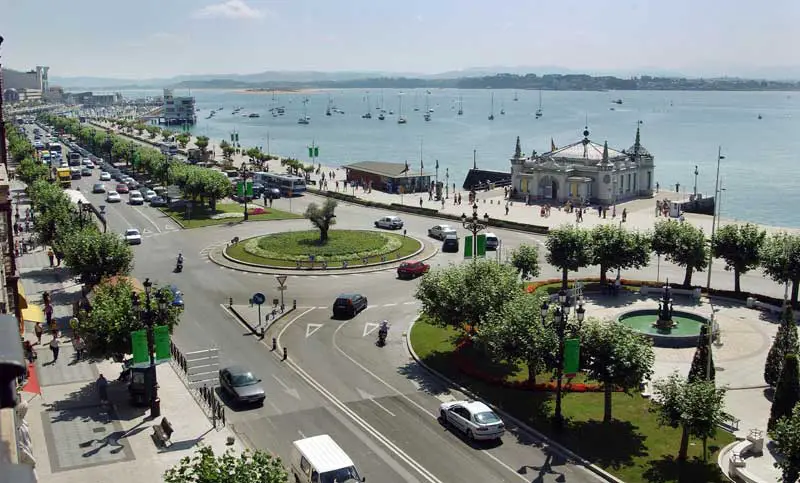
Paseo de Pereda: The ancient pier is a promenade overlooking the bay
and the towns of Somo and Pedrena. cafes can be found as old as El
Suizo where, in the past, traders and military writers met, such as
Pereda himself). The Gardens also have the same name (which, in turn,
is the monument to the writer José María de Pereda, which
contains references to his works).
Santander’s cuisine is based mainly on seafood, for which it has a high
reputation in the Iberian peninsula. A gastronomic tour could start at
the Barrio Pesquero, continue through Puertochico, El Sardinero, and
end at Corbán. Shellfish include amayuelas (clams) and morgueras
(razor clams); fish include seabream, red mullet, anchovies, seabass
and sardines; and there are also squid and cuttlefish. Some typical
dishes from the city of Santander are the fried calamari called rabas
and double donuts, in addition to leading the aforementioned cocido
montanes and fish and seafood dishes ranging from seabass and sardine
to products such as the morguera. Santander’s restaurants offer
excellent local cuisine, based on its exquisite local produce.
Surrounding Area
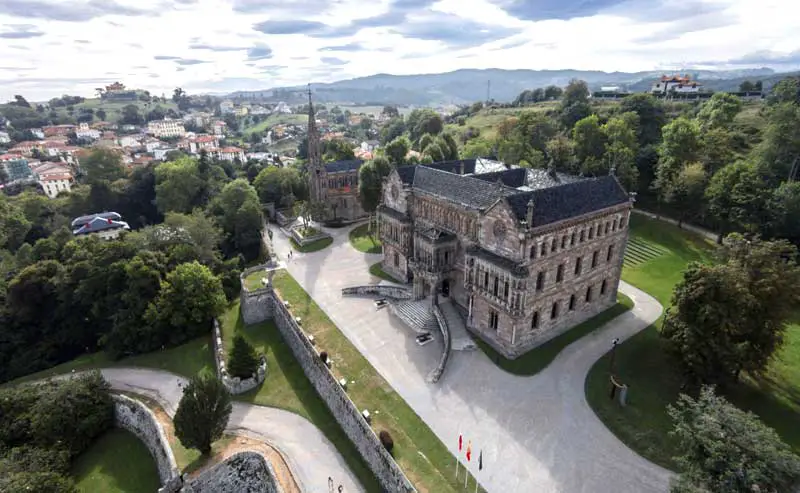
Comillas
Embark on a scenic drive to the majestic town of Comillas, the
former summer residence of King Alfonso XII. The town is rich in
history and boasting magnificent architecture and ancestral mansions. A
highlight of the tour will be a visit to the impressive Sobrellano
Palace. This late 19th century Neo-Gothic style palace is the work of
the Catalan architect Juan Martorel and is the most iconic building of
this charming town. Next to Sobrellano Palace stands the famous
‘Capricho de Gaudí’’. Antoni Gaudí left few
reminders of his work beyond Catalonia, but out of those that he did,
this is by far the most impressive.
The tour continues along the coastal road to one of the most
picturesque villages on the Cantabrian coast, San Vicente de la
Barquera. After crossing the 15th century Maza Bridge you’ll
arrive in San Vicente, where your knowledgeable guide will lead you on
a leisurely guided walk to discover some of town’s most important
medieval buildings.
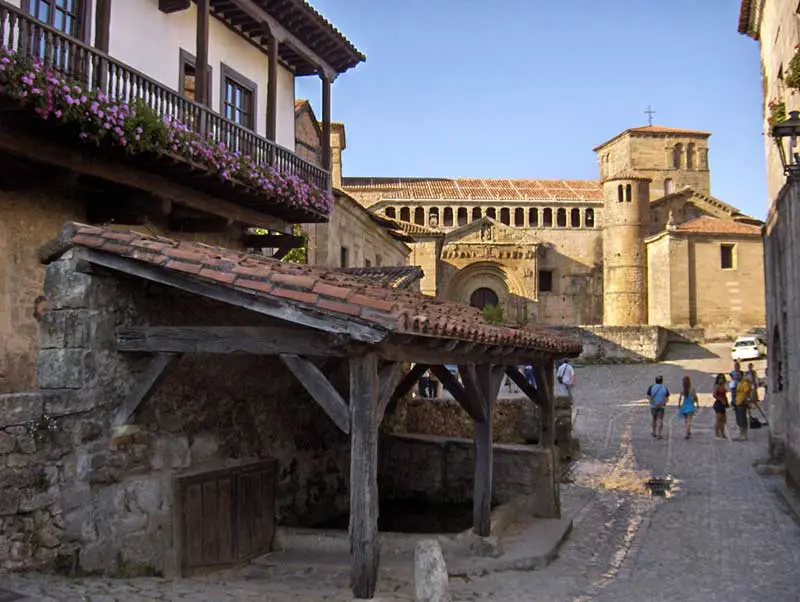
Santillana del Mar
Step back in time during a visit to the ancient site of the famous
Altamira Cave; declared a World Heritage Site by UNESCO in 1985.
Discovered in 1879 by an amateur archaeologist and his young daughter,
it took more than 20 years before scientists would accept that the
wonderful prehistoric paintings of bison, horses and other animal
figures within the cave were the work of primitive people many
thousands of years ago. The actual cave was closed to the public in
2002 to prevent deterioration of the paintings, however you have the
opportunity to visit the museum which depicts the life of our ancestors
and features a spectacular ‘Neo Cave’, an impressive
replica of the original.
The delightful town of Santillana del Mar boasts bright cobbled
streets and magnificent tanned stone and brick buildings. During a
leisurely guided walk, passing the Collegiate Church of Santa Juliana,
the Tower of Don Borja, and Merino Tower amongst other beautiful
buildings. Parador de Santillana del Mar is a beautiful 17th century
mansion formerly owned by the Barreda-Bracho family. Relax over
refreshments of tea, coffee and local pastries.
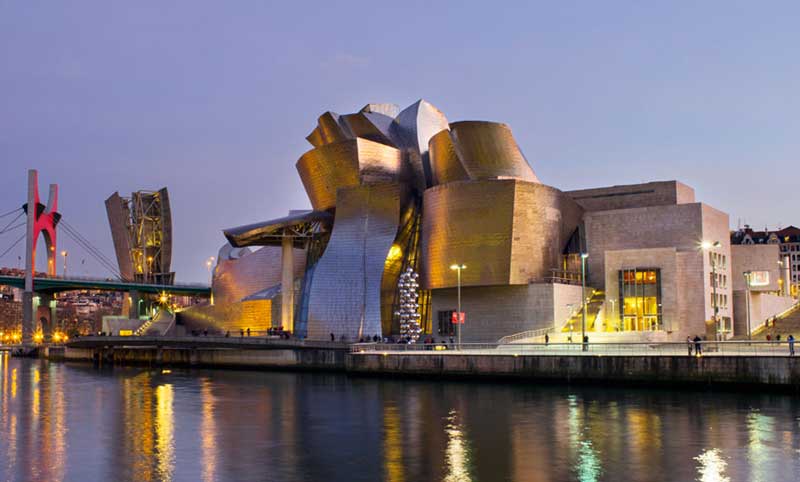
Bilbao
The Spanish city and port of Bilbao is the capital of the province
of Bizkaia and lies on the banks of the Nervion River, which joins the
Cantabrian Sea 11 km further downstream. The Port of Bilbao is located
on the Bilbao Abra bay, and along the Estuary of Bilbao, in Biscay
(Basque Country). The main facilities are in the Santurtzi and Zierbena
municipalities, approximately 15 km west of Bilbao. It is a popular
port for cruise ships. Bilbao is 99 km east of Santander and takes 1 hr
1 minutes by bus.
Bilbao is the most cosmopolitan of the cities in the Basque region
and is constantly evolving. Bilbao ballooned in population during
industrialization and prospered through steel production, shipping,
ship building and banking. However, by the 1970’s the city had
developed into a gray smokestack and a serious economic crisis had
arrived. A new plan was devised and Bilbao started its journey of
rebirth. Old industrial complexes along the river Nervion were torn
down and new projects to improve infrastructure and the overall growth
of the city were started. Bilbao now boasts having the Guggenheim
Museum designed by architect Frank Gehry, a timeless Metro system
designed by Sir Norman Foster, an airport from Spanish architect
Santiago Calatrava and a community center (Alhondiga) designed by
Philippe Starck. The list goes on and on.
Design by W3layouts

